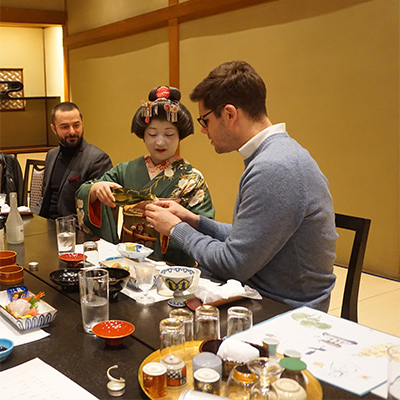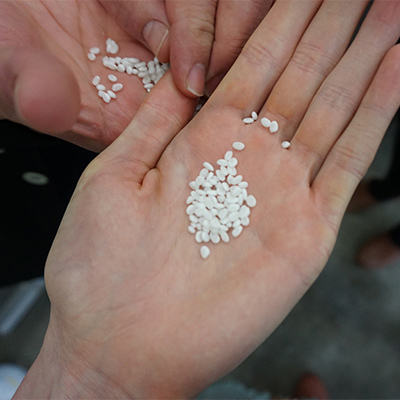The Sake Diaries: six days of sake, soba and scrumptious wagyu
In March, we took a handful of customers on a sake-tasting trip round Japan, accompanied by Bibendum’s Frances Adams and Josh Butler, as well as our resident Sake Samurai Natsuki Kikuya.
It was a jam- (or should that be sake…) packed trip, which took in the breweries of some of our key producers, along with a host of terrific meals, beautiful sites and snapshots of Japanese culture.
Day 1
Landed in Akita in northern Japan amid mountains and lots of snow – a big contrast to the UK! Akita is well known for its clear, pure water, which makes for a very clean, elegant style of sake.
Lunch involved throwing sumptuous slices of wagyu beef onto sizzling hot plates, followed by a long (sleepy) drive to the hotel, where we were greeted with a dive into ‘onsen’ (naturally-occurring hot springs) - blissful after a long flight!
Day 2
We visited Takashimizu brewery, where we got an in-depth (and hands on!) perspective of the sake-making process from Toji Master, Hitoshi Kato. In the evening we dined with some of the only traditional Maiko left in Japan, who have undergone long and rigorous apprenticeships to perform their unique song and dance routines.
Day 3
We had a fascinating tour round Niizawa brewery and met the Toji, Mr Sugihara. The highlight was a sensory exercise, which involved ranking four different sakes according to their levels of alcohol, sugar, umami and acidity. It was really interesting as it highlighted people’s varying levels of sensitivity to these different elements, depending on what flavours they enjoy.
Day 4
It was time to head south with a flight to Nara, where we visited Kaze No Mori brewery. Here it was all about the rice and where it was grown, almost in the same way you might talk about a wine’s terroir.
Lunch was an incredible (but incredibly simple!) meal of soba and broth from a tiny little restaurant where they’ve been making the same soba for decades. It was accompanied by some Kaze No Mori unpasteurised sake (their speciality), which is characterised by a delicious, savoury flavour and slight spritz.
Day 5
After a somewhat challenging (to western palates!) lunch of sake boiled with dried fish, we visited our smallest producer, Shiraki - one of only a handful of sake breweries that specialise in aged sake or ‘koshu’. Visiting the brewery was like going back in time, and we were fascinated to hear the story behind the ‘daruma’ mascot that appears on all their labels. A ‘daruma’ is a wobble toy that can’t be pushed over and signifies the brewery’s resilience through years of hardship, including a punitive tax system, which put many other aged sake producers out of business, along with the hardships of war.
Day 6
Our final visit was to Tenzan brewery where we had a tasting of pasteurised versus unpasteurised sakes to really get to grips with these two contrasting styles. The unpasteurised sakes were vibrant and alive, with a very slight spritz from dissolved carbon dioxide. They were also undiluted with no carbon filtration, which made them rich and full bodied. Being from the very southern tip of Japan, the sakes were made from much harder water than in the north, which added to their body.
That afternoon we looked round a rather unassuming (and frankly rather grubby-looking…) artisan soy sauce factory.But it turned out that what we thought was grime, was actually crucial to the production process, which relied on ambient yeasts and bacteria to contribute to the incredible depth and complexity of the finished product. They were quite unlike any other soy sauces we’d tried before.
After a dinner of Fugu (pufferfish - the dangerous one!), tuna belly and shabu shabu (delicious Japanese soup) we headed for the airport and back to London - loaded with memories of the warm hospitality we’d received and delicious things we’d eaten and drunk.


